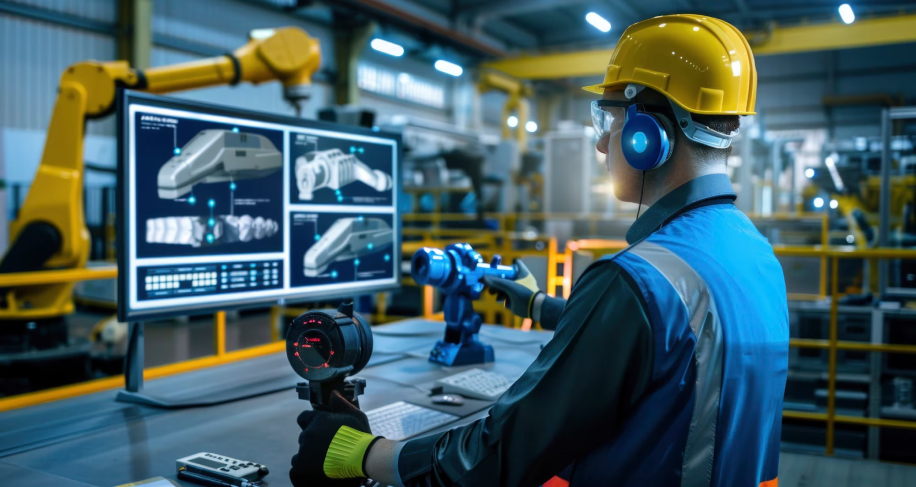What is Digital Manufacturing?
Digital manufacturing encompasses the integration of digital technologies into manufacturing processes. It involves utilising computer-aided design (CAD), computer-aided engineering (CAE), computer-aided manufacturing (CAM), simulation, data analytics, and other digital tools to enhance efficiency, flexibility, and competitiveness123. Digital manufacturing aims to streamline and optimise all aspects of manufacturing, from product design and production planning to shop floor operations and supply chain management4.
What are the key benefits of Digital Manufacturing? Digital manufacturing provides numerous advantages that can significantly transform manufacturing operations. One of the foremost benefits is increased efficiency and productivity through the automation of repetitive tasks and the optimization of manufacturing processes, leading to reduced downtime. Another important benefit is the improvement in product quality, thanks to better design validation, simulation, and real-time quality control measures. Additionally, it shortens the time-to-market by facilitating faster prototyping, smoother workflows, and enhanced team collaboration. Digital manufacturing also offers greater agility, enabling manufacturers to quickly respond to market demands, customize products, and embrace mass personalization. Finally, it delivers cost savings through reduced waste, more effective resource utilization, and informed decision-making based on data insights.
What are the core components of a Digital Manufacturing strategy? A robust digital manufacturing strategy is typically built around several key components. Digital design and engineering use CAD/CAE software to create, simulate, and analyze products during the development phase. The concept of the digital factory involves creating virtual models of physical factories to plan, simulate, and optimize production processes before they are implemented. Manufacturing Operations Management (MOM) focuses on systems that govern production planning, scheduling, and real-time tracking. The Industrial Internet of Things (IIoT) connects machines, systems, and devices, allowing manufacturers to collect and analyze real-time operational data. Finally, data analytics and artificial intelligence (AI) help manufacturers gain deeper insights, optimize processes, and enable predictive maintenance to avoid disruptions.
How does Digital Manufacturing leverage Digital Twins? Digital Twins create virtual replicas of physical assets and processes, enabling real-time monitoring, performance optimization, and predictive maintenance to reduce downtime.
How does Digital Manufacturing impact supply chain management? Digital manufacturing enables real-time tracking of inventory, better supplier collaboration, demand forecasting, and proactive risk management, leading to a more efficient supply chain.
What is the difference between Digitisation, Digitalisation, and Digital Transformation? Digitisation is converting data to digital formats, digitalisation involves using technology to improve processes, and digital transformation is the holistic adoption of digital technologies to drive innovation and growth.
What is the future of Digital Manufacturing in India? The future includes advancements in AI, cloud computing, additive manufacturing, and robotics, driving more efficient, scalable, and agile production models in the Indian manufacturing sector.
How can Indian SMEs adopt Digital Manufacturing? Small and medium enterprises (SMEs) in India can start by leveraging affordable digital tools like cloud-based CAD software, low-cost IoT solutions, and government incentives under programs like MSME Digital Scheme to implement digital manufacturing.






